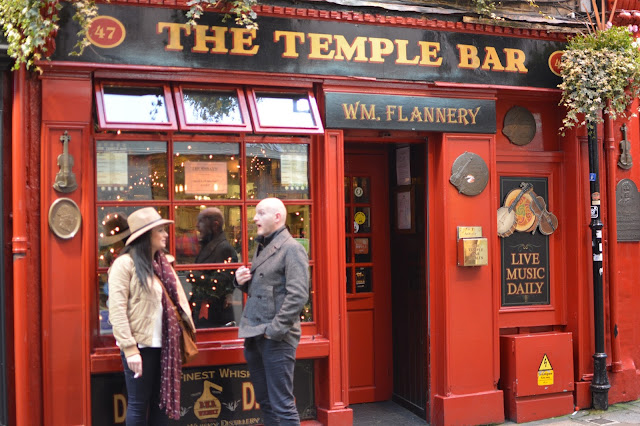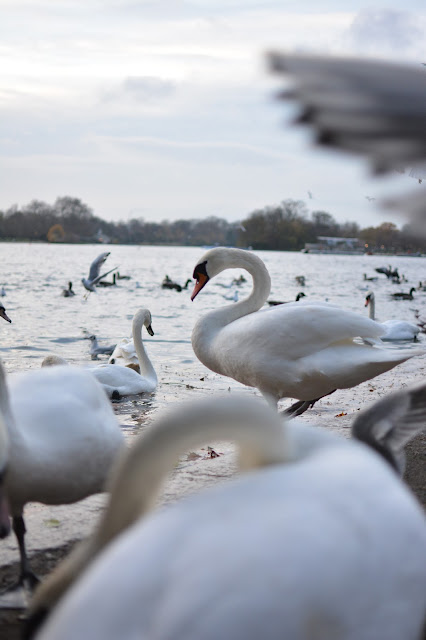Malmo is the third biggest city in the country of Sweden ..it happens to be my mother's home town. Since the construction of the Øresund Bridge, Malmö has undergone a major transformation with architectural developments, and it has attracted new biotech and IT companies, and particularly students through Malmö University, founded in 1998. The city contains many historic buildings and parks, and is also a commercial centre for the western part of Scania.
the city is great for shopping and has a huge list of museums so if you are in north europe its so easy to travel and have a nice day tour.
Pildammsparken with the old water tower.The park is amazing . take some bread with you if you plan a visit cause there so manny animals you ll enjoy feeding them
Monday, 18 January 2016
Amsterdam
If you are planning to visit the capital of Netherlands be prepared for a big bike ride...its a total must if its not raining.everybody is using the bike cause its chip and the roads are easy.
Van Gogh museum its a must give it a day but unfortunately cameras are not allowed
Amsterdam’s 17th-century Canal Ring was added to the UNESCO World Heritage List in 2010, raising the total number of listed sites in the Netherlands to nine. Take the canal tour its beautiful and its worth your money value .
Free cheese tasting in all the stores
be prepared for the cold thought it freezing
Van Gogh museum its a must give it a day but unfortunately cameras are not allowed
Amsterdam’s 17th-century Canal Ring was added to the UNESCO World Heritage List in 2010, raising the total number of listed sites in the Netherlands to nine. Take the canal tour its beautiful and its worth your money value .
Free cheese tasting in all the stores
be prepared for the cold thought it freezing
DUBLIN
I VISITED DUBLIN THE CAPITAL OF IRELAND LAST YEAR..I FOUND IT SO WILD AND CARE FREE.PEOPLE WERE SO FRIENDLY
I WAS MESMERIZED BY THE LIFE AND THE SPIRIT OF THE LOCALS
THERE WERE MANNY ATTRACTIONS AND WONDERFUL ARCHITECTURE
WE LEARNED ALL ABOUT SAINT PATRIC AND THE INFLUENCE HE HAD IN THE COUNTRY
TEMPLE BAR OF COURSE...WITH LOTS OF GUINNESS BEER
I WAS MESMERIZED BY THE LIFE AND THE SPIRIT OF THE LOCALS
THERE WERE MANNY ATTRACTIONS AND WONDERFUL ARCHITECTURE
WE LEARNED ALL ABOUT SAINT PATRIC AND THE INFLUENCE HE HAD IN THE COUNTRY
TEMPLE BAR OF COURSE...WITH LOTS OF GUINNESS BEER
Burren Way,ireland
The Barony of the Burren forms the northern part of County Clare,
overlooking Galway Bay and the Atlantic Ocean. The word Burren comes
from Boireann, or stony district, and refers to the 130 square
kilometres of spectacular terraced carboniferous limestone hills and
valleys that characterise the area. The highest hill, Slieve Elva is a
mere 344 metres above sea level, but the south-western end of the Burren
bedrock drops into the sea at the Cliffs of Moher which rear more than
200 metres vertically out of the sea. Added to these surroundings are
hundreds of miles of rambling stone field walls and a unique density of
well-preserved monuments and buildings from the Neolithic to the early
Christian period, and a rich treasury of rare wild flowers.
The Burren Way is a 123km walking route that takes in the best of what the Burren area has to offer, from the coast at Doolin to majestic wild-flower-decorated limestone terraces and from the remains left by the Neolithic inhabitants of the Burren to the rich heritage of early Christian churches and sites. The long views from the top of Mullaghmore, one of the easternmost Burren hills, are particularly spectacular in good weather.
Terrain consists mainly of quiet tarmac roads, old green roads, ancient cattle droving roads, paths and forestry tracks, but there are also some stretches on busy roads. There are a few short steep climbs involved. Overnight accommodation options are very good in the area, and there are public transport links to some of the main centres on the route.
Walkers may want in particular to linger in the village of Doolin, a mecca for traditional musicians from all over the world.
The Burren Way is a 123km walking route that takes in the best of what the Burren area has to offer, from the coast at Doolin to majestic wild-flower-decorated limestone terraces and from the remains left by the Neolithic inhabitants of the Burren to the rich heritage of early Christian churches and sites. The long views from the top of Mullaghmore, one of the easternmost Burren hills, are particularly spectacular in good weather.
Terrain consists mainly of quiet tarmac roads, old green roads, ancient cattle droving roads, paths and forestry tracks, but there are also some stretches on busy roads. There are a few short steep climbs involved. Overnight accommodation options are very good in the area, and there are public transport links to some of the main centres on the route.
Walkers may want in particular to linger in the village of Doolin, a mecca for traditional musicians from all over the world.
Friday, 8 January 2016
Camden Town
Camden Town, often shortened to Camden (ambiguously also used for the much larger London Borough of Camden of which it is the central neighbourhood), is an inner city district of London
Camden is well known for its markets.
Camden is well known for its markets.
Park, London
One of the best things about London is its abundance of open spaces.
What's more, spending the day exploring the city's majestic parks is
absolutely free
Hyde Park
At 1.5 miles long and about a mile wide, Hyde Park is one of the largest of London's Royal Parks.
St James's Park
St James's Park was founded as a deer park
for the royal occupants of St James's Palace, and remodelled by John
Nash on the orders of George IV.
Green Park
The green, triangle-shaped expanse of leafy land just beyond the Ritz is Green Park
London day 2
Today the City of London is roughly bordered by Liverpool Street, Tower Hill, Blackfriars and Barbican Tube stations.
Geographically, The City sits in the heart of London, a short walk from the West End, historic Southwark, the South Bank, and Brick Lane.
The City contains a rich variety of architectural styles. There are many churches by 17th century architect, Sir Christopher Wren, as well as financial institutions from the 18th and 19th centuries.
You can also find 20th century architecture such as the Old Bailey and one of London's principal examples of concrete Brutalist architecture, the 1960s Barbican Estate.
Subscribe to:
Comments (Atom)


















































